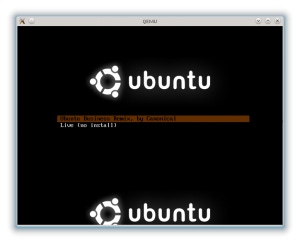
In case there was any doubt that the long-term success of Canonical is tied in large part to Ubuntu’s viability as a desktop solution for businesses, Canonical CEO Jane Silber recently announced a new official spin of Ubuntu tailored at just that market. Will Ubuntu Business Desktop Remix soon find its way to an office near you? That may be too early to say, but here’s a look at what the latest Ubuntu flavor is all about.
It’s no secret Canonical has been pushing Ubuntu for corporate workstations strongly. As early as 2008, the company partnered with IBM on a virtualized desktop solution for businesses. More recently, it’s been pushing Ubuntu as a desktop operating system for enterprises in literature, and has also expanded the life cycle of LTS releases to help appeal to corporate customers.
The announcement last week of Ubuntu Business Desktop Remix is thus only Canonical’s latest move in a longer campaign. And for now, this special enterprise-oriented flavor of Ubuntu remains in the testing phase, currently available only in 32-bit form and intended for evaluation purposes.
Previewing the Ubuntu Business Desktop
So what exactly is there to evaluate? In Canonical’s words, “The remix retains all the goodness of Ubuntu and is compatible with all Ubuntu-certified hardware, apps and tools, adding business-focused tools from the standard Ubuntu and partner archives and removing home user-oriented apps.”
That’s a pretty good summary, at least depending on what one considers “home user-oriented apps.” For geekier readers interested in an exhaustive list of the software differences between the remix and generic Ubuntu, I did a diff of their filesystem manifests, which you can grab here. But to sum it up: the Business Remix lacks games, multimedia applications, some non-English language packs, the NotifyOSD daemon, social media apps (though Empathy instant messenger is included) and the Ubuntu One client.
Some other, smaller pieces of software are strangely absent in the Business Remix as well, including telnet and the bash-completion package. I was surprised to see these missing, because although they’re not vital to most business users, they’re such tiny utilities that I’d have expected them to be left in, if only to make life easier for system administrators.
On the other hand, the major offerings in Business Remix that normal Ubuntu lacks include packages for Adobe Flash, Java and the VMware View client. Right now, these hefty additions to the default software stack bring the size of the remix ISO image to about 712MB, just too large to fit on a CD, which is a bit inconvenient.
Aesthetics
In the looks department, there’s not much at all separating the remix from purply, generic Ubuntu. Besides a back-to-basics boot menu, the remix, which runs Unity by default, is pretty identical to stock Ubuntu 11.10:


The Last Word
As most geeks know, building custom remixes of Ubuntu is pretty easy, and any large business interested in running Ubuntu on its workstations almost certainly would have the technical expertise to put together a custom spin of the operating system on its own. Because of that, I wonder how many organizations will end up using the Business Remix in production environments.
Nonetheless, Canonical’s offering of an official Ubuntu flavor tailored specifically at the enterprise serves as a reminder of the company’s commitment to that market, a fact which may on its own help encourage confidence in Ubuntu as a corporate-desktop solution. Even if this spin doesn’t see much use, it might help inspire more businesses to give Ubuntu a try.
And last but not least, the package called “ubuntu-business-defaults,” which is present in the remix, appears poised to make installing an enterprise-oriented suite in Ubuntu as easy as one click — just like the other *ubuntu-* meta packages. That certainly won’t hurt when it comes to bringing Ubuntu to business desktops.
About the Author(s)
You May Also Like


